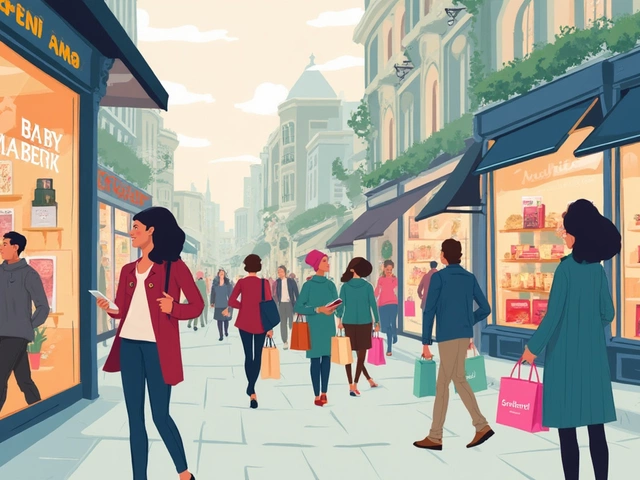Are you holding your bottle of Clinique moisturizer, wondering if cute bunnies got hurt so your skin could be dewy? You’re not alone. This question—does Clinique test on animals?—never seems to die, and there’s a reason why. Even in 2025, in a world where cruelty-free beauty is more than a trend, major brands find themselves in a web of regulations, PR statements, and consumer demands. The lines between what is and isn’t cruelty-free can feel blurry, confusing, and, frankly, a little suspicious. So, let’s lay it all out. Here’s what’s actually happening with Clinique and animal testing, without dodgy half-truths, confusing legalese, or sugarcoating.
The Real Scoop on Clinique’s Animal Testing Policy
Let’s not play hide and seek. Clinique sits under the massive Estee Lauder Companies umbrella, which owns a portfolio that reads like the luxury aisle of any department store. The official stance? According to their own policy as of late 2024, Clinique does not test on animals for most markets, and they like to shout out that their products are safe and "cruelty-free where required by law." But—and this is a pretty big but—they still sell in markets where animal testing is legally required for cosmetics, such as mainland China. This is the catch. When a global brand wants to reach everyone, it collides with local laws and ends up in this sticky grey area.
Clinique’s public website slogans say things like “We don’t test on animals. Period.” Yet, you’ll always spot these extra words: “except where required by law.” It’s like a vegan burger that might have a slice of cheese depending on which country you buy it in. So, in countries like New Zealand, the UK, and Australia where animal testing of finished cosmetics is banned or heavily regulated, that bottle of Moisture Surge really didn’t get near a lab rabbit. But in China, where regulators insist on animal data for imported skin care, it’s a different story. Estee Lauder Companies have said themselves they “never” test on animals unless it’s legally required for safety or regulatory reasons in a country. The translation: they don’t do it unless they have to because a government forces their hand.
Here’s a fun shocker—Clinique started in 1968 as a dermatologist-driven brand; back then, animal testing was just what everyone did to avoid lawsuits and allergic reactions. Jump to now, Clinique actually funds research for better alternatives to animal testing, along with the rest of the parent group. But they won’t take their whole lineup out of China or other markets. And that is the tipping point for true cruelty-free shoppers.

Behind the Scenes: Global Regulations, Cruelty-Free Confusion, and Loopholes
If you’re the kind of person who checks for the little bunny logo before buying, here’s the reality: you won’t find PETA or Leaping Bunny certification on a Clinique label. Both those certifications demand a zero-tolerance policy. One mandatory animal test in one country means no bunny stamp, and that’s that. It’s a harsh line, but cruelty-free advocates say it’s the only clear way. Here’s where things get complicated. According to a 2024 survey by Cruelty Free International, over 60% of New Zealand consumers want “absolutely no animal testing at any stage, anywhere,” for a product to count as cruelty-free.
The Chinese government relaxed some regulations in 2023, but for most imported “special-use” cosmetics, tests can still happen. Sunscreens, hair dyes, and products targeting specific issues get scrutinized the most. Local Chinese brands can avoid animal testing with enough paperwork and local labs, but imported brands play by different rules. Some beauty giants reformulate products or limit their lineup just to get around these strict rules. Others, like Clinique, just don’t make those cuts.
This leads to the much-hated “double standard.” A Clinique lipstick in Wellington is different from one on a shelf in Beijing, at least in terms of the path it took to production. Estee Lauder Companies try to have their cake and eat it too—a cruelty-free brand image in the West, but a willingness to bend in Asia. Why does this even happen? The Chinese market for prestige beauty is enormous—statistically, China's beauty sales were projected to hit $87 billion NZD by 2024. That’s a wallet too fat for any beauty brand to ignore.
If you want to spot an authentic cruelty-free product, skip the catchy slogans and look for real certifications. Check the lists from PETA, Leaping Bunny, Cruelty Free International—none of these feature Clinique. A good rule of thumb for shoppers? If a brand says “except where required by law,” assume animal tests may happen. There’s no shortage of smaller brands doing better in this space. I’ve swapped out my old Clinique foundation for an Aussie label that’s Leaping Bunny certified. Yes, sometimes the finish or shade isn’t identical—but my conscience feels cleaner.
To break it down, here’s where Clinique stands, based on what we know in mid-2025:
| Region | Animal Testing Requirement | Clinique Policy |
|---|---|---|
| New Zealand | Banned | No animal testing |
| UK | Banned/Restricted | No animal testing |
| USA | No Federal ban, but moving towards restriction | No animal testing claimed |
| China (imported products) | Required for some products | Animal testing can occur |
| Australia | Banned | No animal testing |

What You Can Do: Smarter Shopping and Cleaner Choices
If you’re feeling a bit betrayed right now, it’s understandable. But if your skin loves Clinique and changing everything sounds like a hassle, it can help to know the facts, so you can decide what sits right with you. First, plenty of smaller brands have gone the extra ten miles to be reliably cruelty-free, from formulation to supply chain to retail. Companies like Ethique (founded right here in New Zealand), Lush, and Mecca Cosmetica’s own label set the gold standard. They don’t just avoid animal tests—they push for total transparency and fund alternatives.
But say you have a favorite Clinique serum. The good news is, the bottle in your New Zealand bathroom didn’t need animal data for legal clearance. NZ banned finished product animal testing in 2015, and the world’s biggest suppliers adapted quickly. Want to double-check a product? Grab your phone and hop onto Cruelty Free Kitty’s directory or Leaping Bunny’s searchable site, updated monthly. They break down brand stances by region and product line, not just corporate slogans. That way, you aren’t relying on clever marketing for peace of mind.
Another handy tip: reach out to brands. Ask for direct answers—do they test, ever, in any market, for any product? If they wave you toward a policy that says "unless required by law,” press further. True cruelty-free brands answer with a straight-up "No, never." Others spin. Social media has made brands more accountable than ever. In 2024, a viral TikTok about an animal-tested blush led to a local Wellington store dropping that brand from its shelves after public outrage. Your voice really does count.
Don’t overlook vegan status—some brands are “vegan” but still not cruelty-free, or vice versa. Vegan means no animal-derived ingredients, but that's not the same as avoiding animal testing. Scrutinize both angles if you want to be sure. And if you’re traveling to a country where regulations differ (China, Russia, Brazil), the same product’s backstory isn’t always the same. Bring your own products if you're picky, or check ahead to see what’s available locally with direct cruelty-free certification.
Wellington, where I live, is seeing green beauty explode. More pharmacies are stocking ethical lines, and local brands are blooming every year—Manuka Doctor and Antipodes both proudly avoid animal testing and prove it. Price isn’t always higher, either. In fact, many local cruelty-free brands cost less per gram than international labels. If you’re on a student budget, compare by weight, not just sticker price.
Cruelty-free doesn’t stop at makeup. Cleaning sprays, toothpastes, and even bandages have sorted out animal-free alternatives. If you care about the whole routine, keep an eye out for those little accredited bunnies. Double-check policies every year. Brands sometimes switch stances without loud announcements—one year, you’re safe, the next, corporate merges or regulatory changes send your favorite brand back into the grey.
So, does Clinique test on animals? Right now, if a market regulator like China demands it, they comply. There’s no pretending otherwise. At the same time, your local Clinique bottle in countries like New Zealand didn’t go through animal labs. You, as a shopper, decide what’s ethical enough. If “cruelty-free” isn’t iron-clad across all markets, look elsewhere. If you just love their Moisture Surge Gel (I get it—it’s a classic), use it mindfully and explore ethical options when you’re ready.
The beauty world is changing. Five years ago, even asking these questions felt radical. Today, brands know we’re watching. Your wallet, and your voice, are powerful. Use them.


